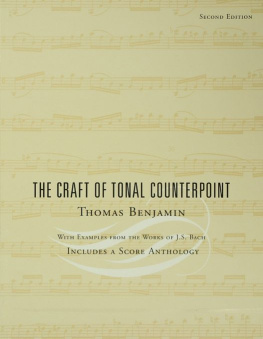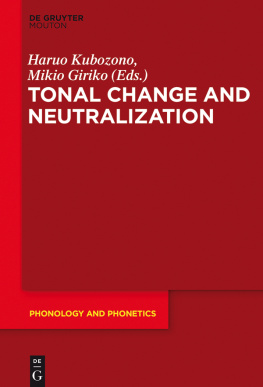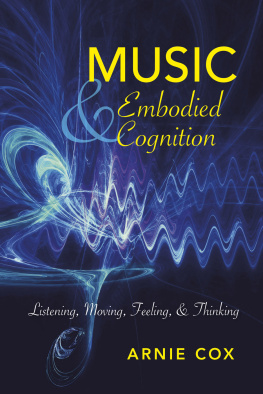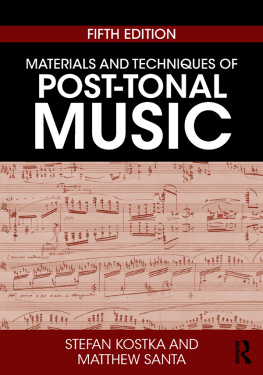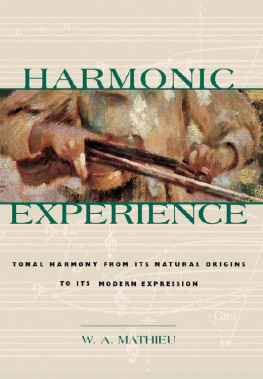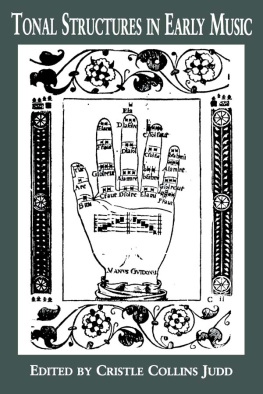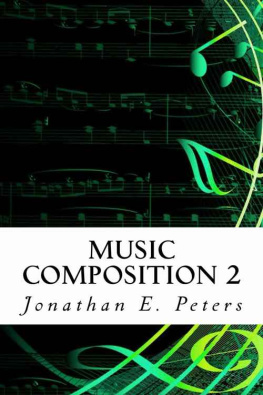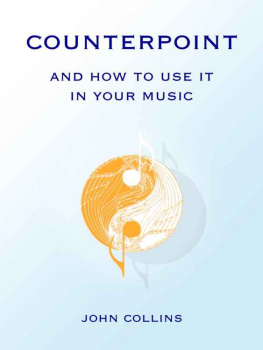The Craft of Tonal Counterpoint
The Craft of Tonal Counterpoint
Second Edition
Thomas Benjamin
Published in 2003 by
Routledge
29 West 35th Street
New York, NY 10001
www.routledge-ny.com
Published in Great Britain by
Routledge
11 New Fetter Lane
London EC4P 4EE
www.routledge.co.uk
Copyright 2003 by Taylor & Francis Books, Inc.
Routledge is an imprint of the Taylor & Francis Group.
Printed in the United States of America on acid-free paper.
This book is a revised edition of Counterpoint in the Style of J. S. Bach,
originally published in 1986 by Schirmer Books.
All rights reserved. No part of this book may be reprinted or reproduced or utilized in
any form or by any electronic, mechanical, or other means, now known or hereafter invented, including photocopying and recording, or in any information storage or retrieval system, without permission in writing from the publishers.
10 9 8 7 6 5 4 3 2
Library of Congress Cataloging-in-Publication Data
Benjamin, Thomas.
The craft of tonal counterpoint / Thomas Benjamin.
p. cm.
Rev. ed. of: Counterpoint in the style of J.S. Bach. c1986.
Includes bibliographical references (p. ) and index.
Anthology (all works are by J.S. Bach) : p.
ISBN 0-415-94391-4 (pbk. : alk. paper)
1. CounterpointTextbooks. 2. Bach, Johann Sebastian,
16851750Criticism and interpretation. 3. Musical analysisMusic
collections. I. Benjamin, Thomas. Counterpoint in the style of J.S.
Bach. II. Bach, Johann Sebastian, 16851750. Selections. III. Title.
MT55.B446 2003
781.286dc21
2003012527
Contents
This book is gratefully dedicated to my supportive and witty colleagues in theory and composition at the University of Houstons School of Music, the Peabody Conservatory of the fohns Hopkins University, and to a few special friends who have been of more help to me over the years than they will probably ever know, first among them my dear wife and best friend, Carol.
I would like to acknowledge the assistance of the University of Houston in awarding me a Faculty Development Leave Grant, which was used to underwrite the years leave during which the original edition of this book was written, and a Publication Subvention Grant to help with clerical costs. I am also indebted to my students of counterpoint at the University of Houstons School of Music, the National Music Camp (Interlochen), and at the Peabody Conservatory. Painstaking and thoughtful criticisms of the manuscript were received from Bruce B. Campbell, Robert Lynn, Bruce E. Miller, Robert Nelson, Anthony T. Rauche, Randall Shin, Eileen Soskin, Dan M. Urquhart, and Thomas Warburton. The reader must ascribe to my pigheadedness any errors of omission or commission remaining in the book. Linda Watson provided helpful critiques of several of the graphic reductions, and Laura Neidlinger, Carol Benjamin, and Elaine Gerdine lent steady hands at the computer, and fine editorial skills. Major thanks are also due my supportive and helpful commissioning editors, Maribeth Payne (first edition), Richard Carlin (current edition), editorial assistants Robert Byrne and Emily Vail, and production editor Lisa Vecchione.
In the roughly seventeen years since the first edition of this book appeared, a great deal has changed in the field of music theory, and several intelligent and interesting new textbooks for the study of tonal counterpoint have appeared. At the same time, the continuing popularity of this text, as well as the need to update its explanations and exercises, has encouraged the author to undertake a revision.
My original reasons for writing this book still seem valid. Of the several other texts in this field currently available, all seem, while in many ways estimable, problematic as regards their pedagogy. Some strike me as insufficient in the ordering, rigor, or comprehensiveness of their exercises; crucial conceptual or skills-developing steps may be omitted. Other texts seem unfocused and diffuse in terms of musical style: works by vastly disparate composers are thrown together in a way that seems likely to confuse the student. Still others appear to be aimed at the already expert theorist of music, and are so tied to specific metatheoretical concepts and language that many students will be sure to find them mystifying.
The danger of such approaches is to complicate technical and stylistic matters by wrapping them in theoretical constructs, reinforcing the tendency of most music students to assume that music theory is an abstruse and mystical discipline divorced from their own experience of musicin other words, that music theory is an undertaking entirely separate from musical practice, and from their own lives and needs as practicing musicians.
The attempt in the current edition is to construct a book that the intelligent student can read and understand, with some help from the instructor. It focuses on the work of Johann Sebastian Bach, and aims to be practical and useful as a study of both style and technique through performance, listening, analysis, and writing. It reflects current thinking about tonal music in its emphasis on structural harmony and line, structural-pitch reduction, linear-intervallic patterning, and so on, but presents these concepts in what I hope is a practical and immediately applicable way, as free as possible from abstract theorizing, and always focused on the music itself.
Those students and instructors who wish more background information on Bachs life and output and other issues of music history, theory, and literature are referred throughout the text to appropriate resources.
This book seeks to provide a great deal of fine music for performance, listening, analysis, and model making; straightforward explanations of technical and aesthetic matters; and a multiplicity of exercises in listening, analysis, and writing that are both technically sound and musically satisfying. The approach taken here is style-specific; the examples are drawn from the instrumental music of Johann Sebastian Bach, especially his keyboard music. But the techniques covered transfer easily to other media within the Bach style, at the instructors option. It is, of course, also true that composers of Bachs time considered performing media to be to some extent interchangeable. The emphasis on the music of one composer allows this text to be used not only as a study of contrapuntal technique but also as a model of style analysis that is procedurally transferable to the music of other composers and historical periods. The instructor is free to focus as much as the course goals allow on matters of style in addition to the more purely technical aspects (to the degree to which style and technique can in fact be distinguished from each other).
This text is based on a study of musical practice, and the student is directed in the analytical exercises to deal with the music itself. It is clear that any meaningful study of music must be solidly based on experience in listening, performing, analyzing, and writing; it is urged that each class period include performancesrecorded or liveof the music under study, and a discussion of what has been heard, including reference to issues of music history and literature, and performance practice. Some instructors may even wish to combine this text with a survey of the music of Bach, and listening assignments and tests would be most appropriate. As we all know, technical studies tend to be bloodless and abstract unless constantly connected with musical experiences; such connections, made explicit by the instructor, will tend to validate and clarify these studies.

